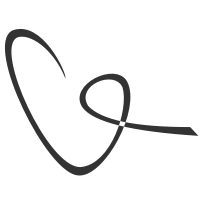Natural Language Form
2013-2015 @ TIBCO Software Inc. | Enterprise Software
Background and my role
TIBCO being leading in the fields of data integration, automation and infrastructure software, has most of its users from technical background, and has been exploring ways to lower the technical barrier for people from non-technical professions.
I started my work on a product whose users are semi-developers, mapping data between different web services. Later it was transformed into a bigger scale web-based system called Simplr, allowing non-technical users to connect 3rd party apps and services that they are using in their professional life and set up automated functions, so that they can free their hands from repeated workflows and focus on something more productive.
I took the lead on the UX design for this project when it kicked off. I collaborated very closely with the head of product team and engineers to define features and roadmap. I was responsible for creating persona, use cases, site maps, interaction patterns, detail wireframes and interactive prototypes.
Primary Persona
Charlie wears multiple hats within Sales and Marketing, from working a trade show to helping out with important customer service calls. With a business degree, comfort in dealing with people, and a generally positive attitude, he's a strong asset to the team. He's not a "database guy", but last year he used macros to clean up and export all of the company contacts from Excel and Filemaker, and got those CSV files into Salesforce.com. He's not a programmer either, but he helped set up the company blog on Wordpress. He works with lots of web and mobile app, and knows that often the best way to be successful is to roll up your sleeves and get things done.
Challenge
From a practical point of view, re-using the precursor's existing architecture in this project vastly reduced the cost of engineering implementation. However, the differences between target user groups (semi-developer v.s. non-technical business professionals) set the challenge. There are constraints imposed on the design because of the way of the exciting architecture works, for example, business user must fill out a few technical form fields, which used to be developers' work.
The issue became apparent during a public demo when developers showed a lot interests in the product, and some business professionals failed to build an automatic workflow even with the extensively re-designed UI. In talking with tested users, I identified the re-occurring pattern: they did not understand the technical terms. Even for advanced users who understood the terms, they did not have any clue to what should be selected due to the lack of context.
design goal
Further lower the technical knowledge requirement for user to get the job done
However as mentioned above, the existing architecture has constraint on design by nature. So I decided to work on two design trails at the same time:
Embrace the constraint and keep improving/simplifying the current user experience by iteration.
Create a new design and persuade the team to invest into a new architecture.
Research
Business user's intension of creating an automation workflow is apparent. In talking with PM and peer designers from other products in the company, I realized that it is the business user who initiates the process of building an automation workflow. He/she has a need of automation for business development, then he tells the developers, who are responsible for the building. In the review of their related artifacts, I noticed that the requirements they showed to developers are mostly plain text (documents or emails) describing the automation they need. It is familiar to the user, simply descriptive and does not involve technical knowledge. It may be something that I can use.
In further research, I found that the UX pattern simulating a descriptive narration, i.e. Natural Language Form, is not rare on the market.
Contrast and compare
There was also extensive literature research on this pattern compared to the traditional Form fields.
Form: the input form is an essential element of almost any website or application these days. Input is a core method of interaction, and in many cases it represents the hard conversion point between success and failure. With the amount of time and effort we put into bringing users to our sign-up and contact forms, it's surprising that we tend not to spend a proportional amount of time on the forms themselves.
Natural Language Form: short for natural language processing, a branch of artificial intelligence that deals with analyzing, understanding and generating the language that humans use naturally in order to interface with computers in both written and spoken contexts using natural human languages instead of computer languages.
Concept
I wireframed the concept using one of the use cases for the product as an example to demonstrate how the natural language form can be applied.
An interactive prototype was used in presenting to the product team, as well as the UX team internally.
The concept was also tested with internal users who matched our persona. It was verified that the experience has greatly improved compared to the old form for reasons:
It was much easier to understand what need to be filled in with the contextual sentences and hints.
The similarity between the concept and Mad Libs game provides the familiarity and fun that they enjoy a lot.
Impact
The team was impressed by how the product can be simplified with natural language form. Constrained by the organizational timeline, the particular design above did not get fully implemented. However, the team had agreed on pursuing the direction with the existing product architecture.
Another note..
Even though the concept was not fully implemented in the product I originally designed for, it was appreciated by peer designers and product owners when shared with the UX community in the company. It was eventually adopted by my fellow designers and implemented in another new product that was released later in the same year. I am glad and proud of the work that benefits the community.








